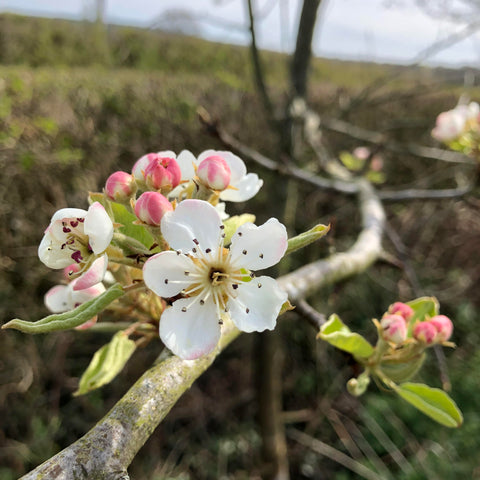
Blossom, Blossom, And More Blossom!
Share

At the height of apple mania in the 19th century, the Victorians grew some trees for their blossom alone - the fruit was entirely secondary. I used to think this was pretty eccentric, but I've grown to understand their enthusiasm for fruit tree blossom. And not just fruit trees; we have some humble native plants which produce stunning flowers. Some of these too produce edible fruit. And, of course, all can be fabulous for pollinators.
Spring blossom is absolutely vital for a huge range of bees, butterflies, moths, hoverflies and flies. The volume of pollen and nectar a tree can produce dwarfs what you might be able to provide in a flowerbed. And as the seasons change, early blooms are getting to be particularly important for a range overwintering insects.
What we've done in our garden is to provide an uninterrupted succession of blossom from January until May. We're lucky in that we've got a bit of space, but none of the trees I've planted are huge. Most are fruit trees or native, partly because our soil is so difficult (heavy clay) and our site so exposed.
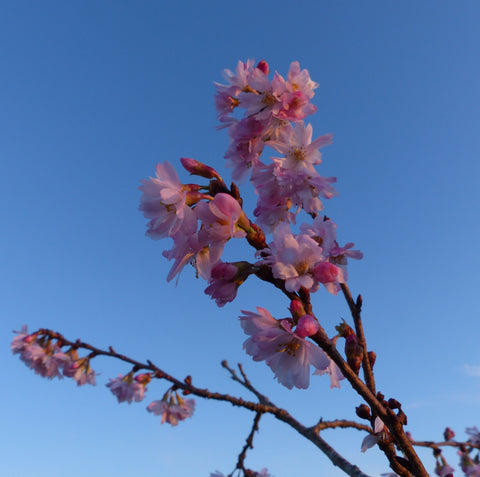
We do start in January with a bit of a cheat, though - Winter Flowering cherry, Prunus x subhirtella 'Autumnalis Rosea' . To be honest, it's probably out from December. The only other properly ornamental tree we have is Amelanchier lamarckii, which flowers in April. I say "properly ornamental", because in addition to our own Salix caprea we also have several weird willow cultivars. I can't remember their names, but they flower at odd times of year. They seem to be good for bees, but wouldn't win medals at Chelsea for their looks.
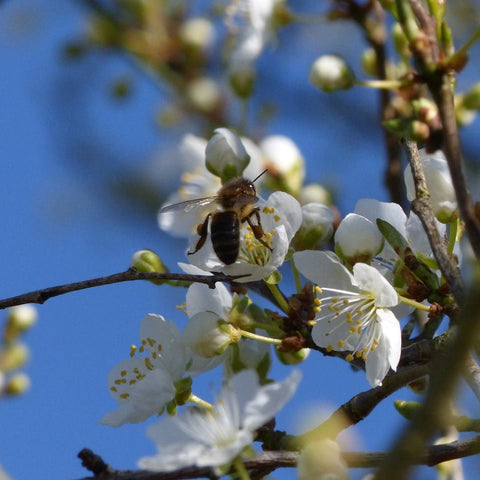
February is the month of the Myrobalan, Prunus cerasifera (pictured above). It comes in a form with dark red leaves too, but we have planted the native plant everywhere here - in hedgerows and free standing. It's the first native tree to come into flower, and often overlooked - people often mistake it for Blackthorn, as it has similar flowers and the odd spike. It's better behaved though; it doesn't sucker and grows quickly to form a neat little tree.
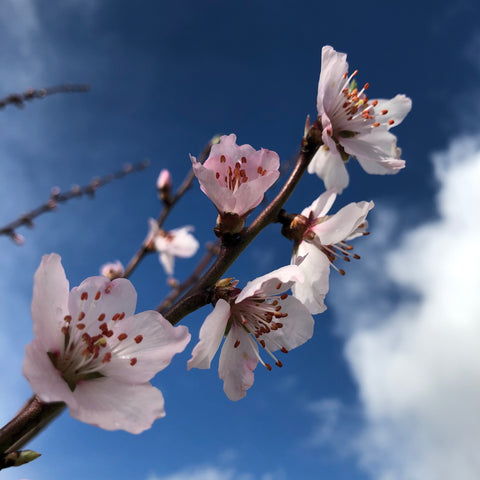
After Myrobalan our almonds and peaches flower - very early, in late February / early March. Peaches (pictured above) are known for it, to the extent that many people have traditionally hand pollinated them here if they wanted a peach crop as there were so few pollinators about at that time of year. Like almonds, beautiful blossom - and in our case we're not really interested in any crop!
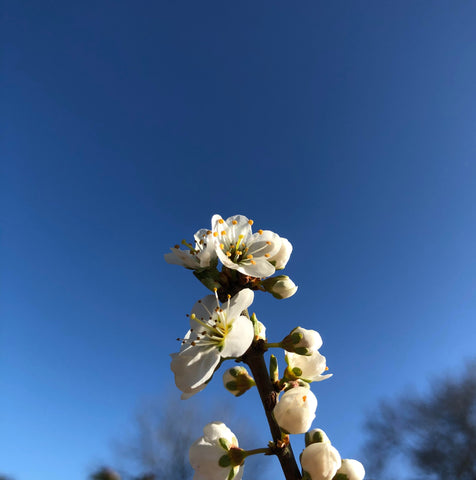
Next are damsons, and blackthorn (above) and bullace - all related, of course. Hardy, great for mixed hedges, helpful fruit. Traditionally beekeepers knew their colonies had overwintered successfully if there were bees flying when the snowy drifts of Blackthorn flowers appeared against its dark wood.
Then, as March progresses and morphs into April, we have gages, pears - eaters and eccentric perry pears (pictured above) - and plums, followed closely by cherries. We have a couple of mazzards - like our perry pears, rare and old trees which, hopefully, will live long:
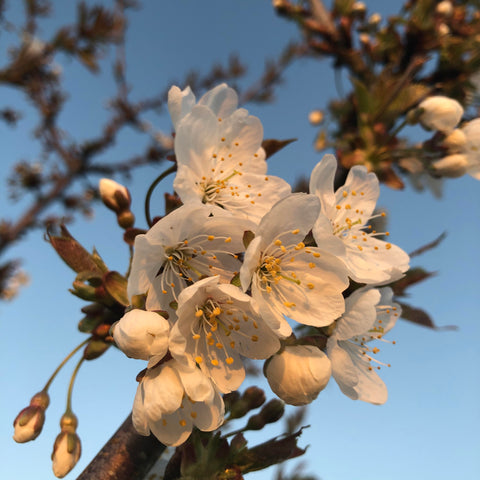
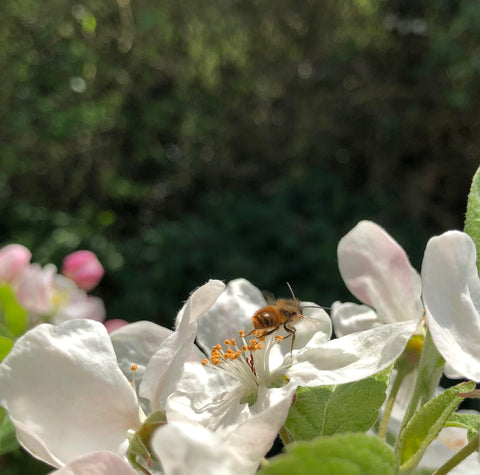
As I write now the crab apple is out - we have 'Evereste' espaliers (pictured), quickly followed by the pure white blossom of 'Dartmouth'. Our eating apples are starting to flower too; we have three stunners in the garden - 'Annie Elizabeth', 'Lady Sudeley', and 'Arthur Turner'.
And we have more to look forward to! Most obviously Mayflower, hawthorn, in our hedgerows, but also quince and, last of all, big white medlar flowers.
That's over four months of continuous flowering. No replanting, and some judicious feeding and pruning the only management required. On top of all that, our trees offer wildlife a valuable resource. Oh, and tasty fruit too. I nearly forgot.


